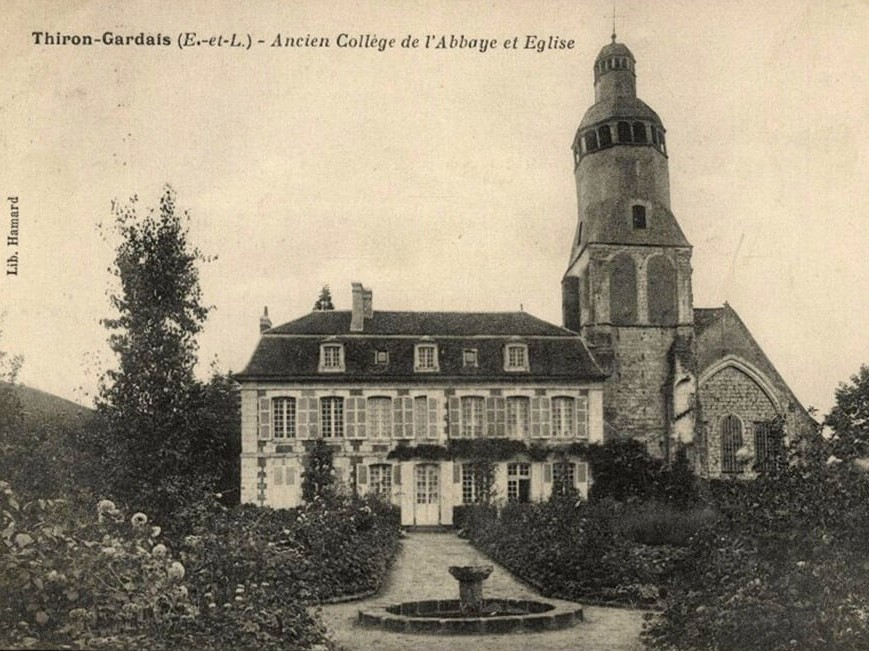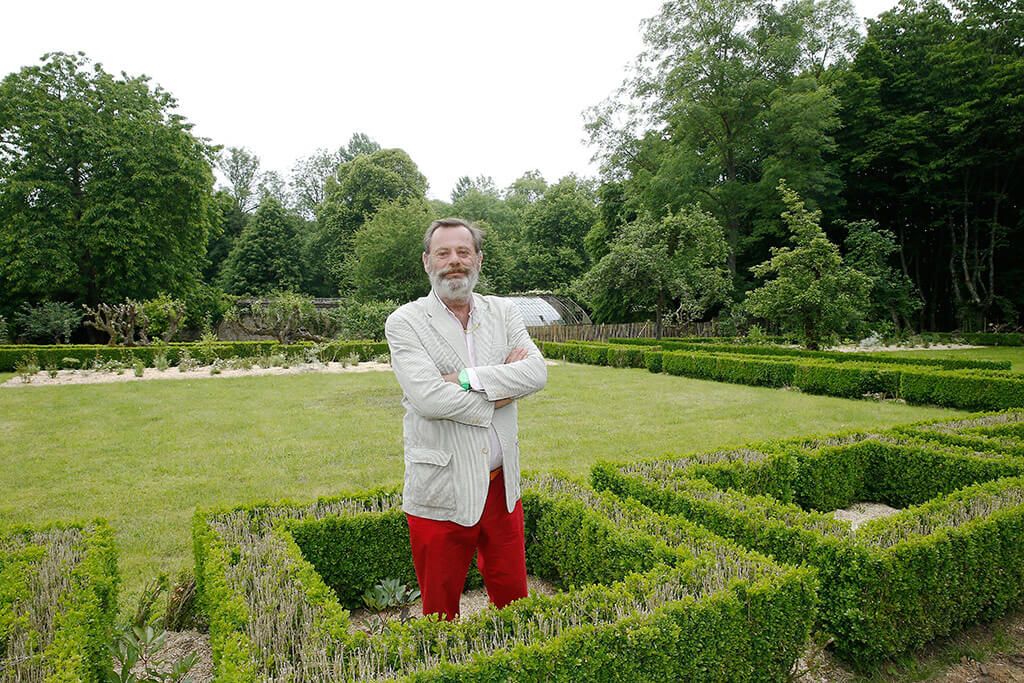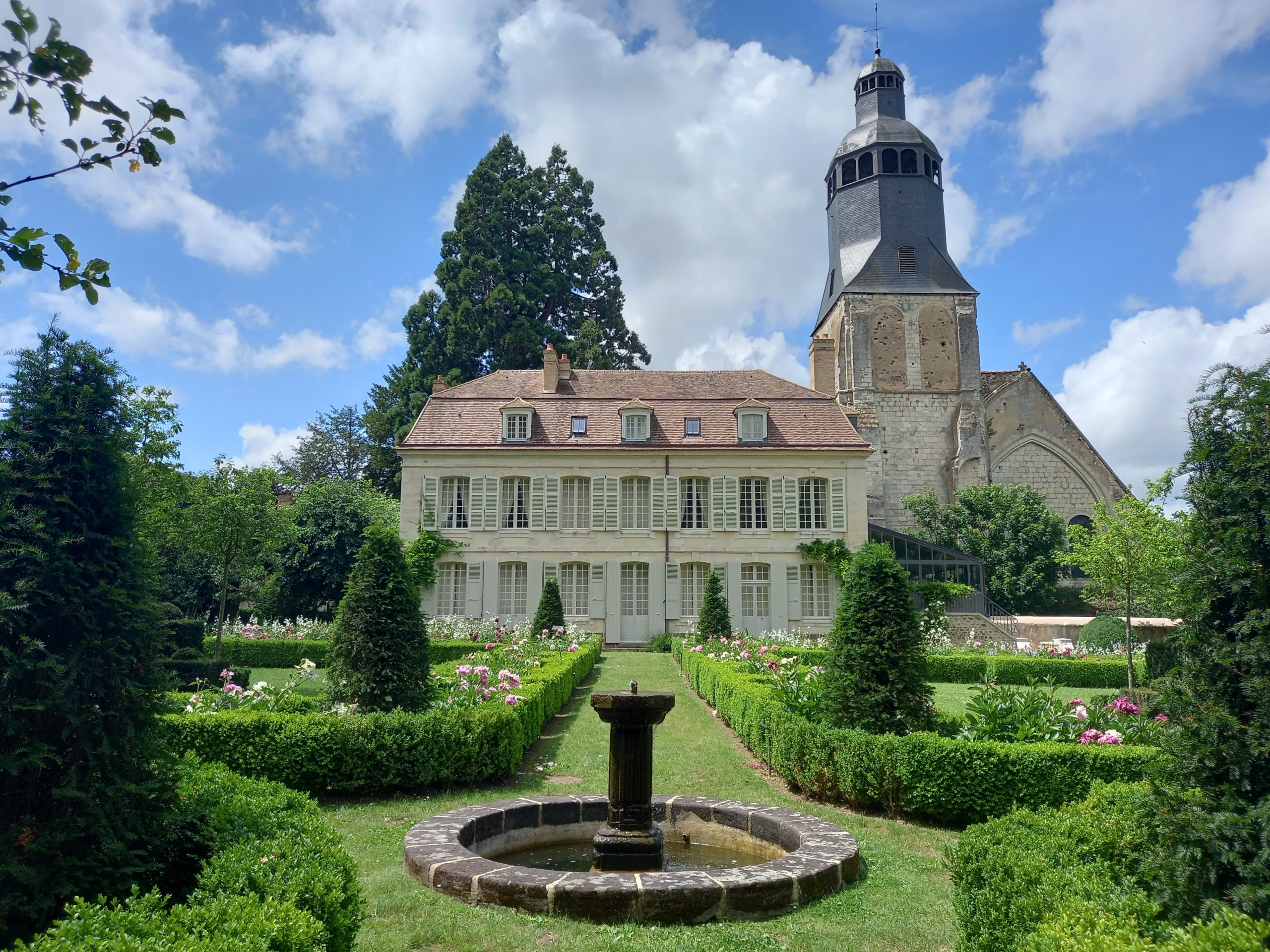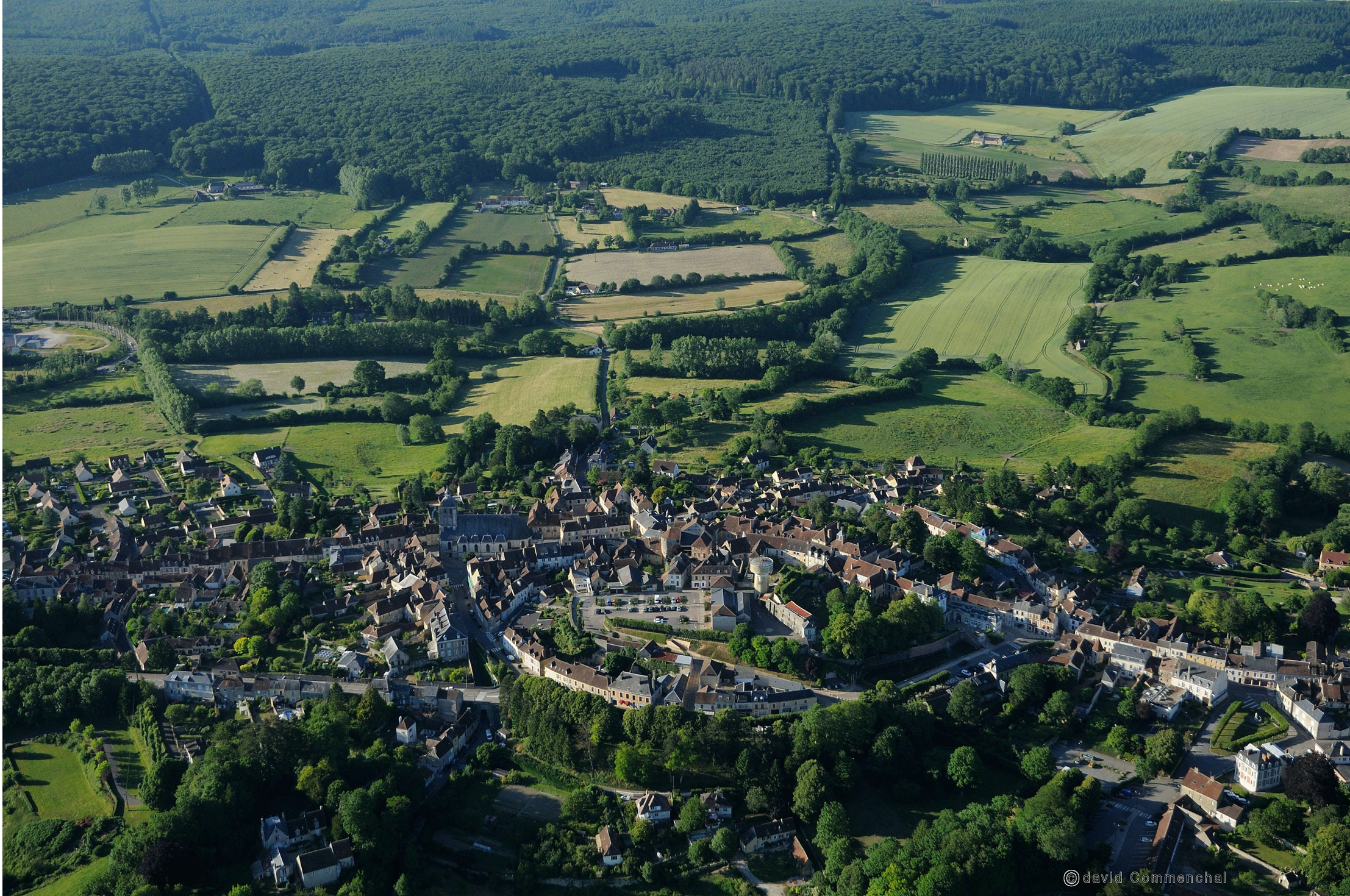
Saint-Bernard of Abbeville or Tiron, oil on wood, first half of the 17th century
1114
Creation of the abbey
In 1114, Bernard of Ponthieu (or Tiron), a pious hermit in strict observance of the Rule of St. Benedict, settled in the parish of Gardais with his disciples. Supported by Bishop Yves de Chartres and Rotrou III, Count of Perche, he founded the Abbey of the Holy Trinity of Tiron, which became a high place of spirituality in Perche.

Monasticon Gallicanum, Achille Peigné-Delacourt, 1871
Radiance and precipitous decline
Very quickly, the abbey grew rich and developed thanks to Saint Bernard’s reputation for holiness and the protection of the French king Louis VI Le Gros. Over the centuries, it became a religious center with 22 sister abbeys and more than a hundred priories in France, but also in Scotland and England. Unfortunately, the Hundred Years’ War, the Wars of Religion and the commendation of the abbey meant fires, looting, but also slackness which precipitated its decline in the 17th century.

Portrait of Henri de Bourbon-Verneuil by Pierre Mignard (1612-1695), oil on canvas, lined
1630
Foundation of the College
Henri de Bourbon-Verneuil, the natural son of King Henri IV of France and his favorite Henriette d’Entragues, was appointed abbot of Tiron at the age of five. As he was anxious to put the complex back in order and to restore discipline, he created a college to educate the nobility of the area. He entrusted the management of the college to the Benedictine congregation of the monks of St Maur, who were renowned for their erudition and moral rigor.

Portrait of a student officer, oil on canvas, anonymous
1776
From college to royal and military college
In 1776, the excellent reputation of the establishment led Louis XVI to choose it to become one of his “royal and military colleges”. As in 11 other schools with the same title in France, the students were trained for the cadet competition, at the end of which they could enter the Military School of Paris.

Sculpted stone from the demolition of the abbey church
Turmoil and dismantling
The end of the French monarchy marked the decline of Tiron Abbey. The church was closed in 1792, and the college closed its doors in 1793. The site was bought by Etienne Taullé, a former student and teacher of the college.
– The abbey became a huge stone quarry for the construction of houses in the town and its Gothic choir collapsed.

The college and its garden before their restoration
Renewal
André Guillaumin, a botanist with a passion for history, took over his father’s work on the royal and military college of Thiron-Gardais which the family had inherited. Until his death in 1974, he received his family there and planted many exotic species in the garden. In order to avoid the dispersal of this unique heritage, his heirs wanted the public authorities to take over the college. The Conseil départemental d’Eure-et-Loir thus bought the site in 2005.

Stéphane Bern and the College restoration team ©Vlada Krassilnikova
2012
Purchase by Stéphane Bern
On a grey morning in December 2012, Stéphane Bern visited the site under the guidance of the President of the Conseil départemental. Fallen under the spell of the place, he bought it and proposed to restore it and open it to the public.

Restoration site of the College
Restauration of the buildings
The buildings are restored under the responsibility of Guillaume Trouvé, heritage architect, who has ensured the use of traditional methods. 50 artisans, journeymen and craftsmen succeeded one another to bring the renovation project to completion. Carpenters, roofers, stonemasons, electricians and plumbers are contributing to the rescue of this unique heritage.

Louis Benech in the garden of the College
Restauration of the garden
To preserve the soul of the park while respecting the perspectives of a pleasure garden, no one was better suited than the famous landscape designer Louis Benech. He revitalized the existing plan, revived the formal structure based on boxwood embroidery, restored the typical fruit tree alignments, preserved the informal labyrinth and reinforced the spirit of the 19th century park by adding some typical subjects planted by André Guillaumin.

View from the Collège garden
2016
Opening to the public
After long and important renovation works, buildings and gardens are revived and open to the public in 2016.
Stéphane Bern Foundation for History and Heritage
The Stéphane Bern Foundation for History and Heritage, created in 2016 under the aegis of the Institut de France will one day have to continue the work of its founder. In an effort to preserve this historical heritage with the museum’s collections and archives, Stéphane Bernhas chosen the Foundation as his universal legatee, responsible for continuing to share this heritage with the public, by opening the private part of the College one day. For the time being, Stéphane Bern runs his Foundation, which, with the help of two History and Heritage juries, supports the research work of young historians and finances concrete actions in favor of heritage.
